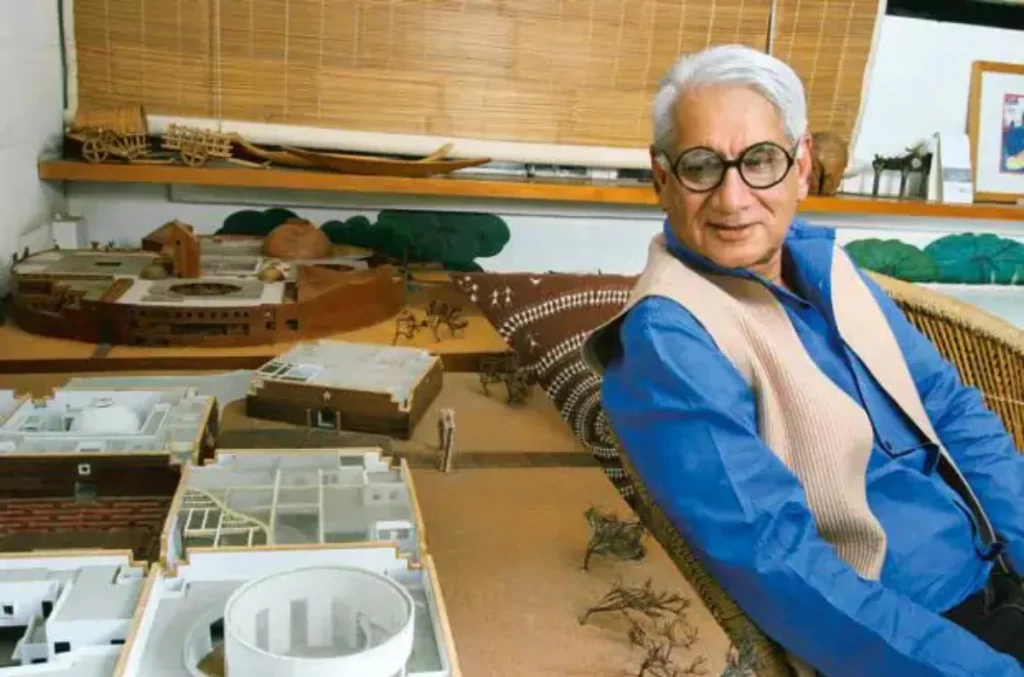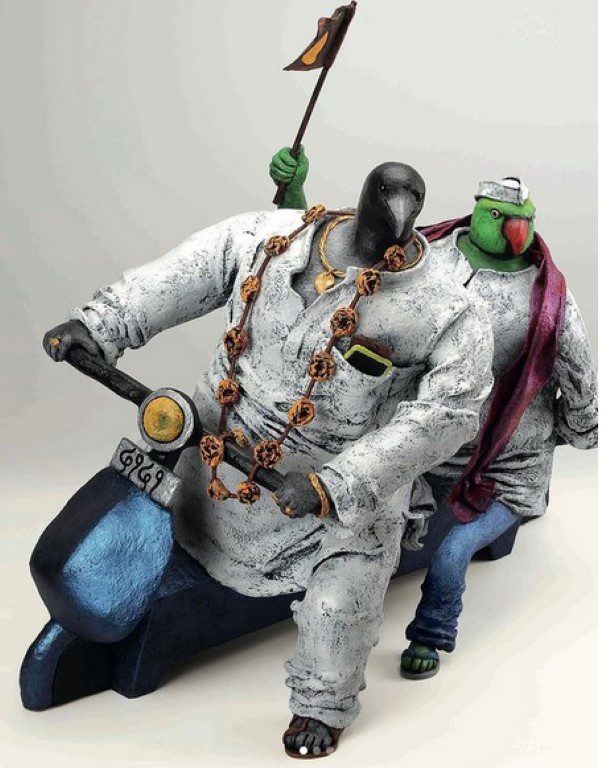How Did Charles Correa Architecture Help With Urban Planning India?
After the 1947 Independence, a united India was riddled with the issue of rebuilding the nation. After the Britishers had been defeated, they left the country in ruins. There was no effective governing system or amenities, and most importantly nobody addressed the needs of the urban poor. This issue would have been the decline of the once abundant nation, had it not been for Charles Correa, who through the skilful use of traditional materials and approach took India to new heights. His life can be described as a service to the urban poor. Due to his extensive work, he won both Padma Shri (1972) and Padma Vibhushan (2006).
Who is Charles Correa?
Charles Correa was a well-known and esteemed Indian urban planner and architect. He was born on 1 September 1930 in Secunderabad. He studied at St. Xavier’s College (Mumbai), the University of Michigan (USA), and the Massachusetts Institute of Technology (USA). By 1958, he had set up his firm, where numerous Charles Correa works were produced. He designed the Mahatma Gandhi Sangrahalaya, Ahmedabad (1958-1963), Sonmarg Apartments, Mumbai (1961-1966), Madhya Pradesh Legislative Assembly, Bhopal (1967), Jawahar Kala Kendra, Jaipur (1986-1992), amongst others. His last project; which will be completed posthumously was the Inter-University Centre for Astronomy and Astrophysics (IUCAA), Pune.
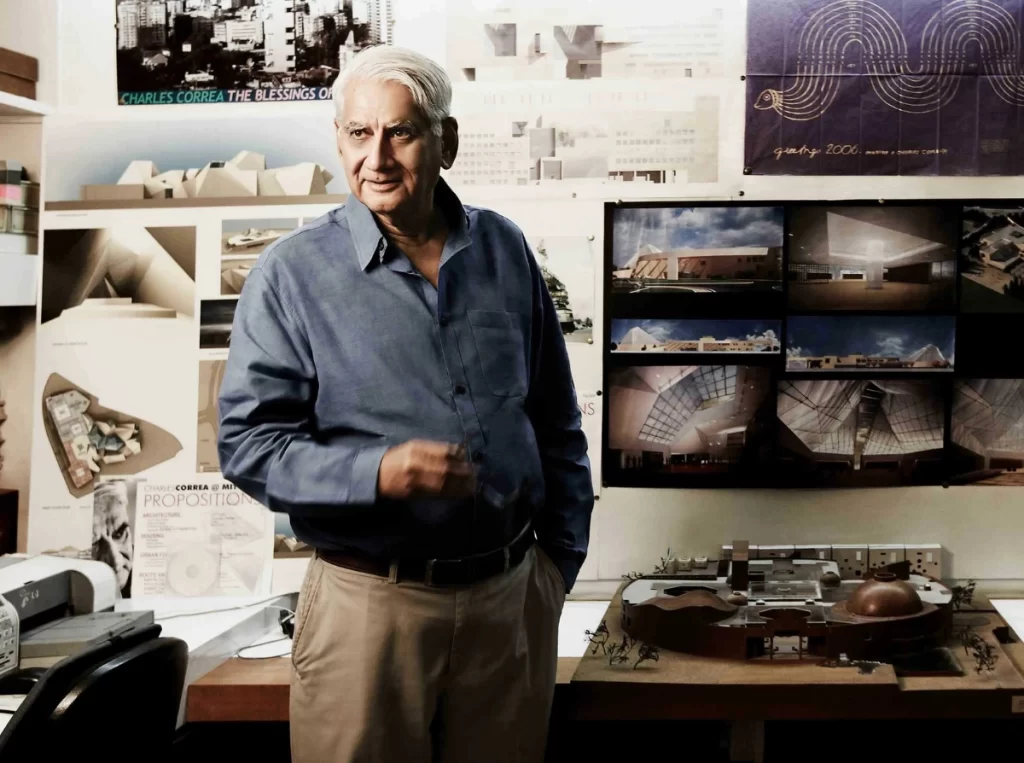
In 1984, he established the Urban Design Research Institute in Mumbai. The institute propagated the need to address the improvement of urban communities without hampering the built environment. The following year, he was appointed as the Chairman of the National Commission on Urbanization by Prime Minister Rajiv Gandhi. Throughout his career, he resolved urban issues through low-cost housing and shelter in Indian architecture. In 2015, Charles Correa died of chronic illness in Mumbai. He is survived by his wife; Indian textile maestro Monika Correa and his children.
Charles Correa Architecture
To date, India has witnessed almost 100 Charles Correa buildings from low-income housing to opulent condominiums. Charles Correa philosophy focused on the absolute supremacy of locally-sourced materials and vernacular designs, rooted in the geographical culture. He rejected the post-modernist buildings, made of glass and steel, as, to him, they were devoid of context and life. In most of Charles Correa housing projects in sustainable cities in India, one would observe the ample use of terraces and outdoor spaces.
Charles Correa Famous Works
Charles Correa philosophy remains a driving force behind many of his projects. He aspired for modernity, all the while imbuing his creations with the local context and culture. Suffice it to say, Charles Correa buildings are and will be aesthetically, socially, and culturally relevant. Let’s explore some of his works which are a masterclass in urban planning India.
1. Tube House Charles Correa (1961 – 62)
The Gujarat Housing Board held an All-India competition for low-cost housing, and the ‘tube’ house took first place. Even though the competition brief mandated walk-up apartments Charles Correa’s row houses offered the same density and more space for each family. Hot air rises and escapes from the top of a low-rise, high-density arrangement of long, narrow parallel units, creating convection currents that aid in natural ventilation.
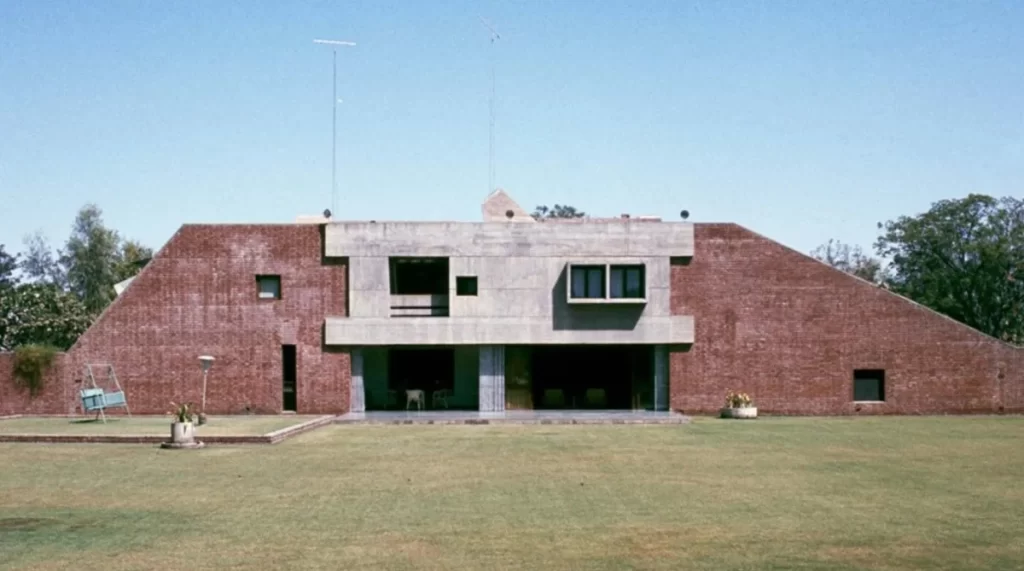
To shield the interior of the house from intense sunlight, the roof has a steep slant. There are very few doors inside the apartments as the different levels provide seclusion and the pergola-grid covering the interior courtyard provides security. An open floor plan allows for privacy by dividing the functions across the various levels of the house.
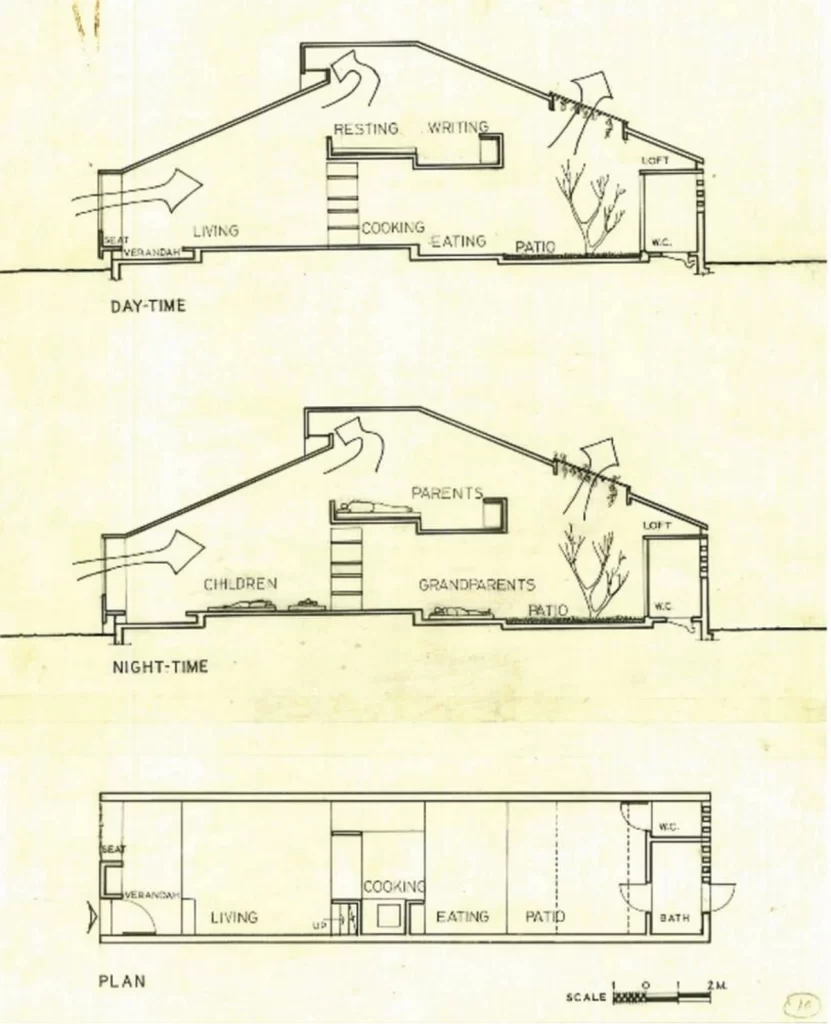
2. Charles Correa Gandhi Ashram – 1963
Gandhi Ashram or Sabarmati Ashram is located in Sabarmati, Ahmedabad and served as one of the residencies of Mahatma Gandhi. Gandhi Smarak Sanghrayalay, or the Gandhi Memorial Museum, is housed within the Ashram. He combined modernist and minimalist planned architecture with the idea of cosmology and Hindu architectural sensibilities. Winding passageways created by Charles Correa lead to a central water courtyard with rooms situated on either side.
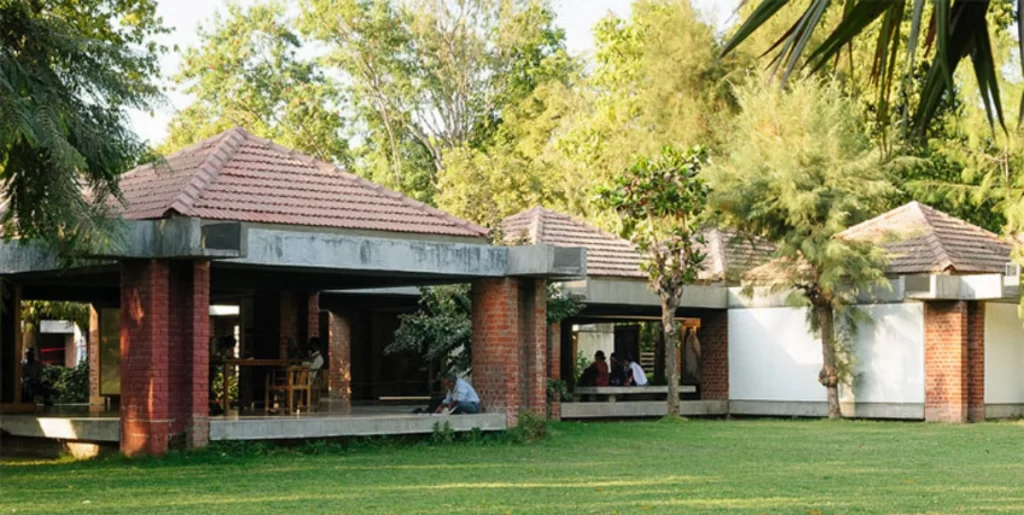
The building has stone floors, wooden doors, a ceramic tiled roof, and brick columns. He included five differently programmed interior spaces featuring offices, meeting rooms, books, photos, paintings, and a collection of letters, within the asymmetrical grid plan. Each of these spaces is housed behind brick walls and wooden louvre screens, and it is divided into modules measuring six meters square. Each module has an excellent interaction between temperature, lighting, and visual permeability.
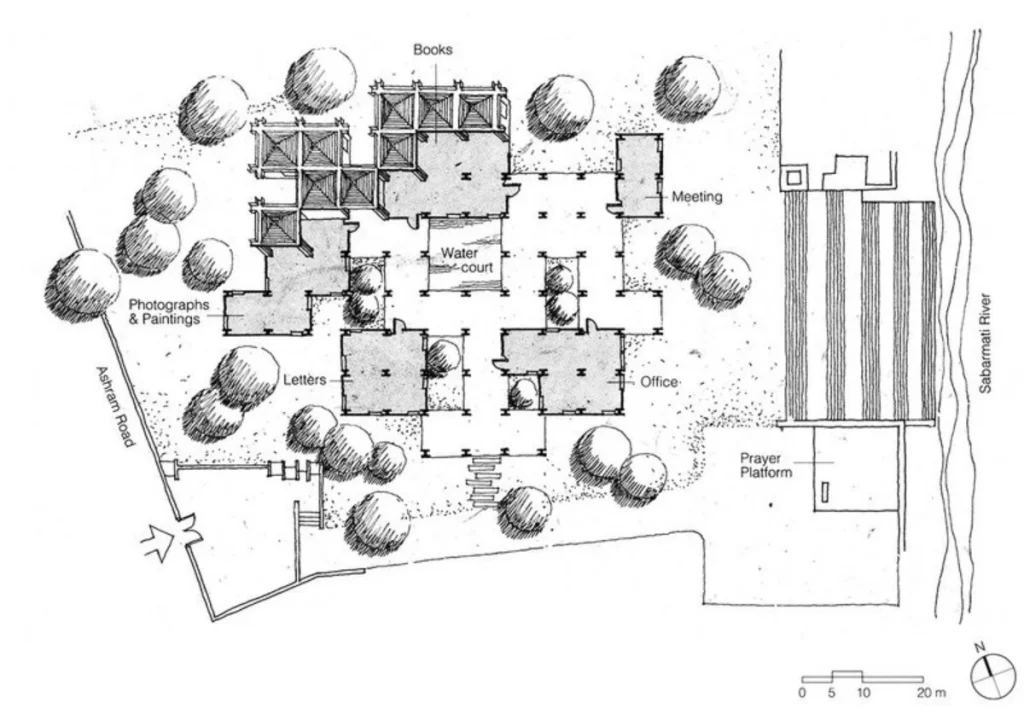
3. Parekh House Charles Correa – 1968
The Parekh House is one of the famous Charles Correa housing projects located in Ahmedabad. Two pyramidal sections were created akin to Cablenagar’s: the ‘Summer Section’, which is used during the day to shield the interior from the heat, and the ‘Winter Section,’ which is used in the early morning and late evening to expose the terraces to the sky. The house has three bays with a lot facing east-west; the summer section is situated between the winter section and the service bay, which houses the kitchen, restrooms, and circulation, on one side. The brick-bearing walls directly convey the climatic ideas that guide the design.

Overhead pergolas were created by Charles Correa to provide daytime shade for the wall. Sunken or recessed windows only let light diffusely enter the building. The heat and direct sunlight coming from the entrance are blocked by louvred doors. Parekh House Charles Correa’s step pyramidal form is inversely related to season. The front of the house has a large garden.
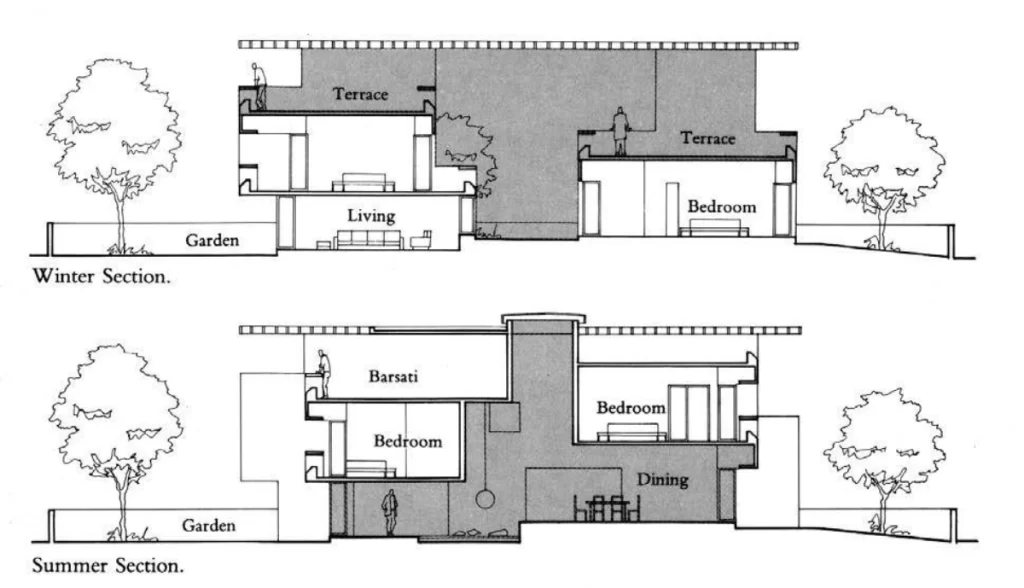
4. Kovalam Beach Resort Charles Correa (1969-74)
The Government of India commissioned Charles Correa works to establish the country’s most beautiful, yet unknown beach as a popular resort destination. Instead of concentrating all the facilities in one place, the master plan creates more potential growth points, which makes it possible to respond to future demands more adaptable. The building is constructed in the classic Kerala vernacular style, with red tile roofs and white plastered walls. Other pavilions feature light bamboo chhatris with coir matting on the floor and indigenous handicrafts from Kerala.
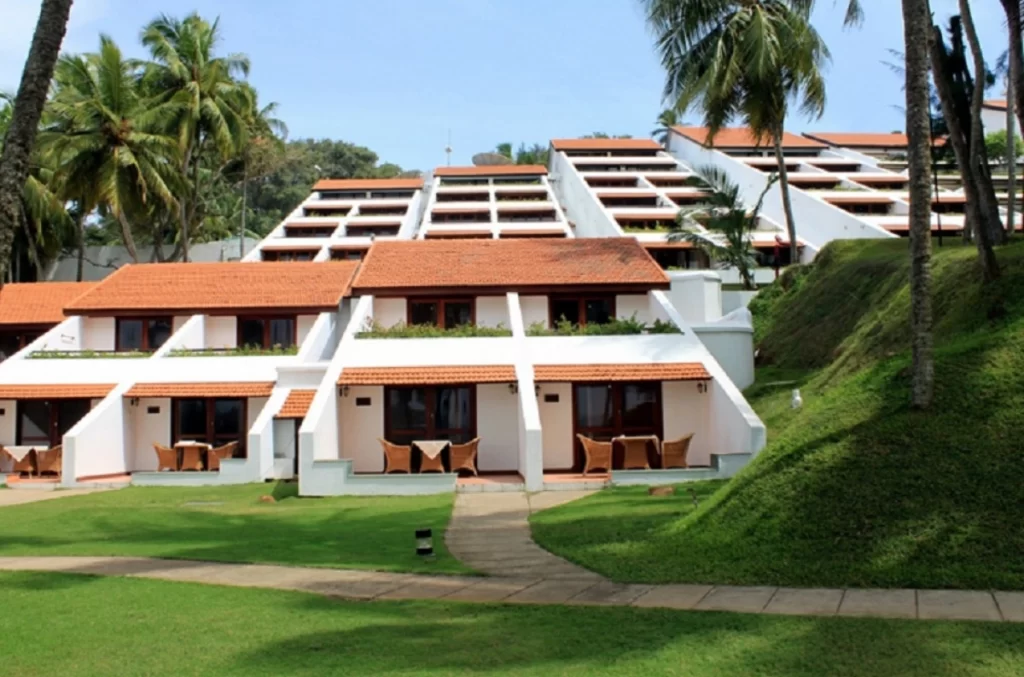
There are three different layouts for the guest rooms. First, the separate ‘Kudil’ suites with their kitchens and other amenities are located on the beach’s edge. The main hotel, which has 100 guest rooms, is located overlooking the beach. The accommodations are all incorporated into the hillside, with separate sundecks for each room. Clusters of “detached units” with roughly the same amenities as the ‘kudils’ but at somewhat higher densities are located between the kudils and the hotel.
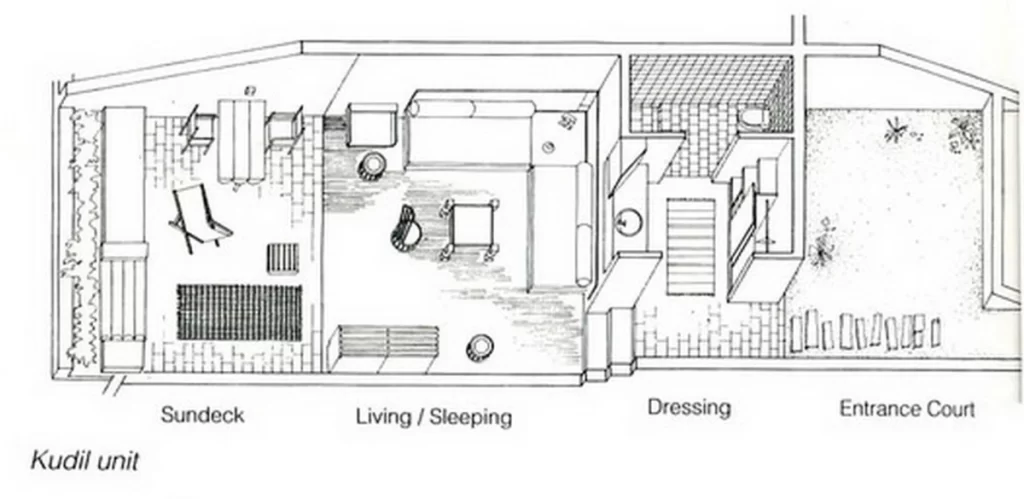
5. Bharat Bhavan Charles Correa – 1982
Bharat Bhavan is a museum and multi-art complex situated in Bhopal, Madhya Pradesh. With a view of the lake, the location is atop a sloping hill. The site’s natural contours create a network of sunken courtyards and terraced gardens that house galleries, workshops, a studio, an Indian poetry library, a museum of tribal art, and other cultural facilities. Top lights—which come from slots along the terrace parapets and the concrete shells—provide ventilation and lighting. The courtyard and terrace openings feature two sets of shutters: the outer set consists of large wooden doors that are closed at night for security, and the inner set is made up of a combination of fixed glass and movable panels for light and ventilation.
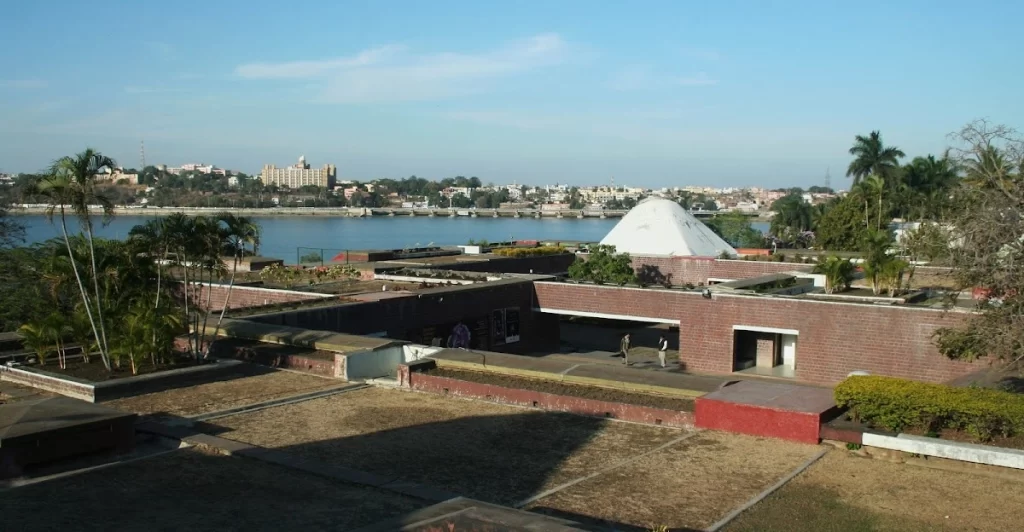
The layout of the terrace invites visitors to stroll along the amphitheatre’s natural gradient. The courtyards in the middle offer peaceful areas. Charles Correa refers to the ebb and flow of energy as a “Ritualistic Pathway.” The stairs remind one of ‘ghats,’ which are steps that descend to a body of holy water. Charles Correa architecture is influenced by the surroundings, with climate control being a top priority to make it a standout in sustainable cities in India.
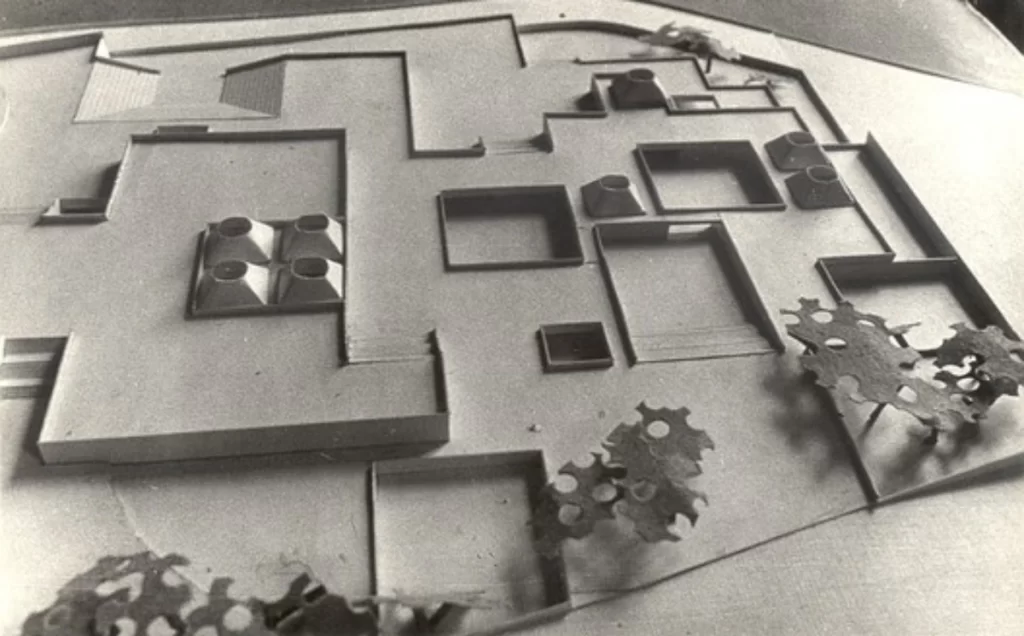
6. Belapur Housing Charles Correa – 1983
The Belapur Housing is one of Charles Correa housing projects in Mumbai. This project is a traditional Indian urban spatial syntax reinterpreted. The foundation of the project is a single idea: each residence will have its own plot, allowing for future expansion. Every home is on a separate plot and does not share any walls with its neighbours. However, the toilets are next to each other for Easier plumbing. Based on the size of the plot, five different types of dwellings are designed; the smallest is a single room with a toilet, and the most elaborate is a two-story tenement. Every unit is constructed with load-bearing masonry, painted, and plastered. The design was kept straightforward to allow even unskilled labourers in the area to build the homes, providing employment.
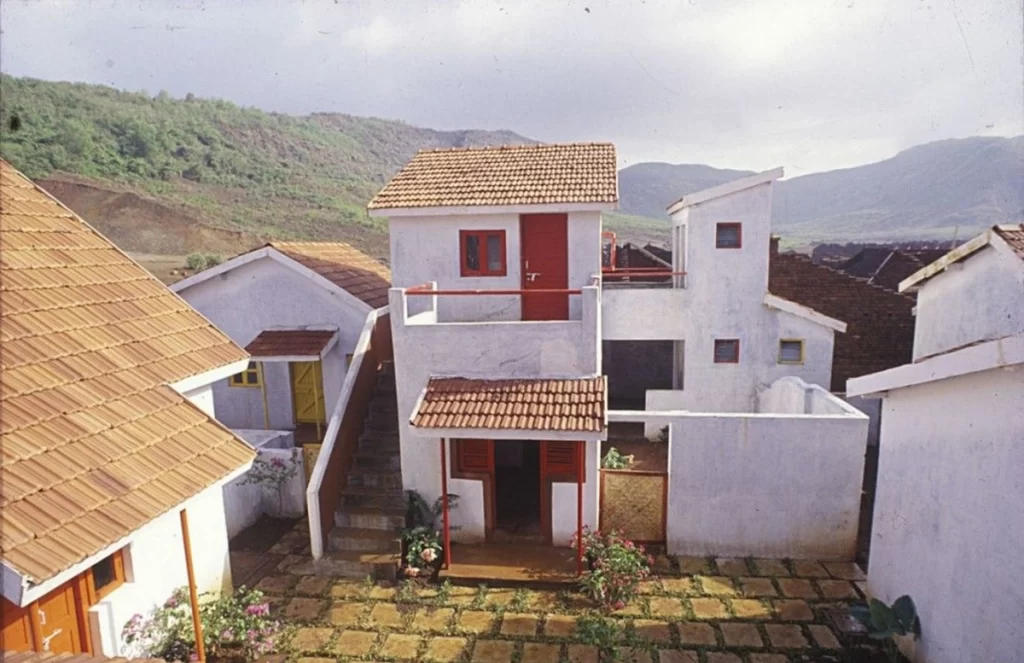
The Belapur housing complex embodies Charles Correa philosophy, considered most essential to housing: equity, open-to-sky spaces, incrementality, and a strong sense of community. All pedestrian traffic in the development is restricted to designated parking areas on the periphery. The open areas effortlessly transition from a small court to a spacious community area; an ode to the grandeur and efficiency of Indian architecture.
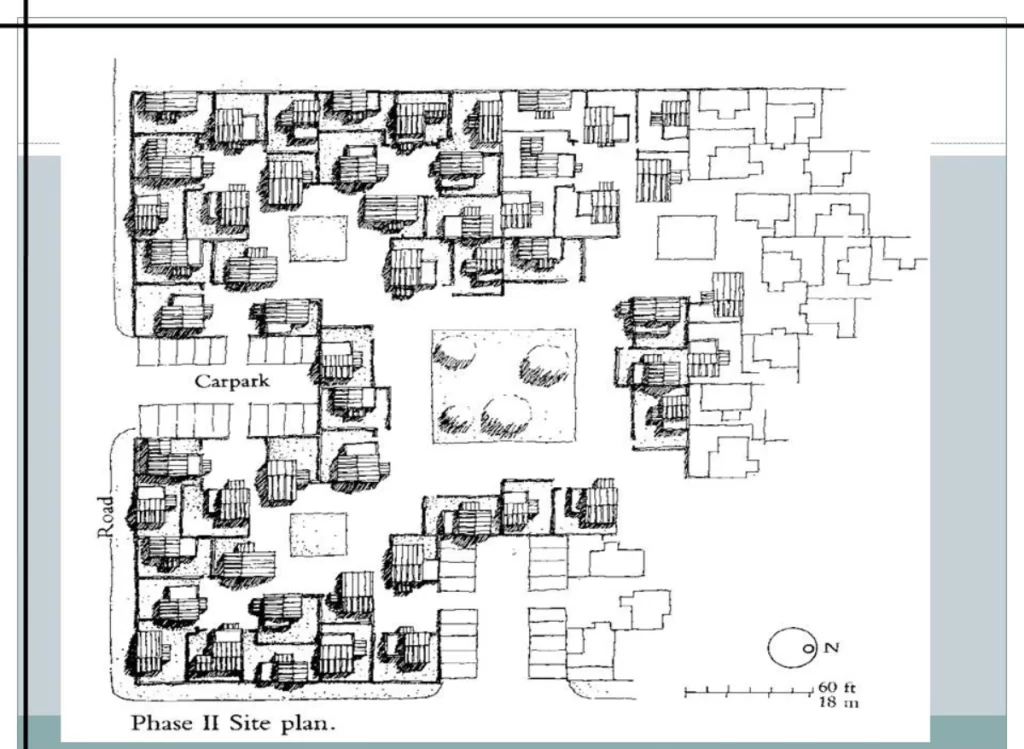
7. Charles Correa Kanchanjunga Apartments – 1983
Charles Correa Kanchanjunga Apartments are located in Mumbai and feature 32 luxury residencies. The structure consists of four interlocking apartment types, each with three to six bedrooms. The interior raised living volumes and the exterior earth-filled terraces are distinguished by smaller level displacements. Charles Correa was able to provide comparatively deep, suspended garden verandas on the tower to effectively protect these high-rise units from the sun and monsoon rains.
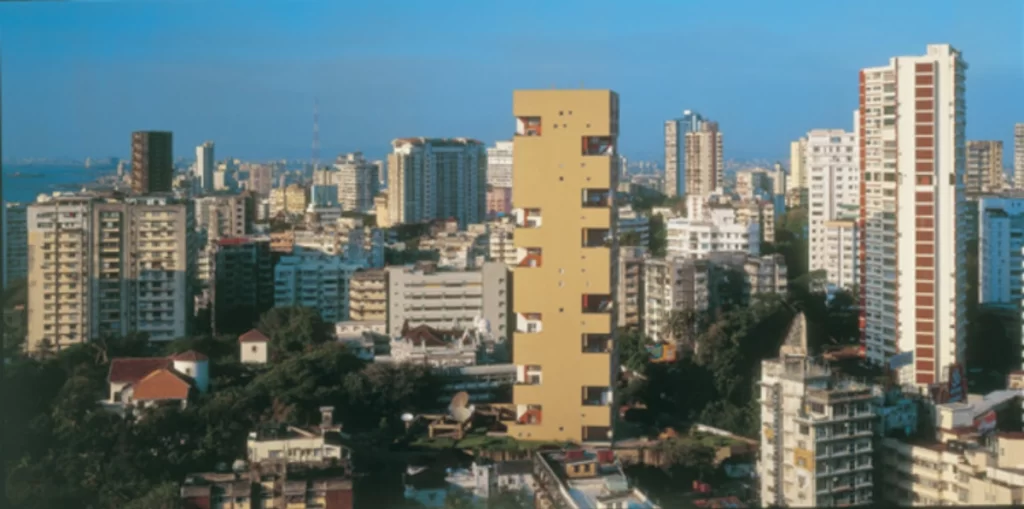
The primary structural component that resists lateral loads is the central core, which is made up of lifts. By using the slip method of construction, the central core was built before the main structure. For a multistory building, this technique was first applied in urban planning India.
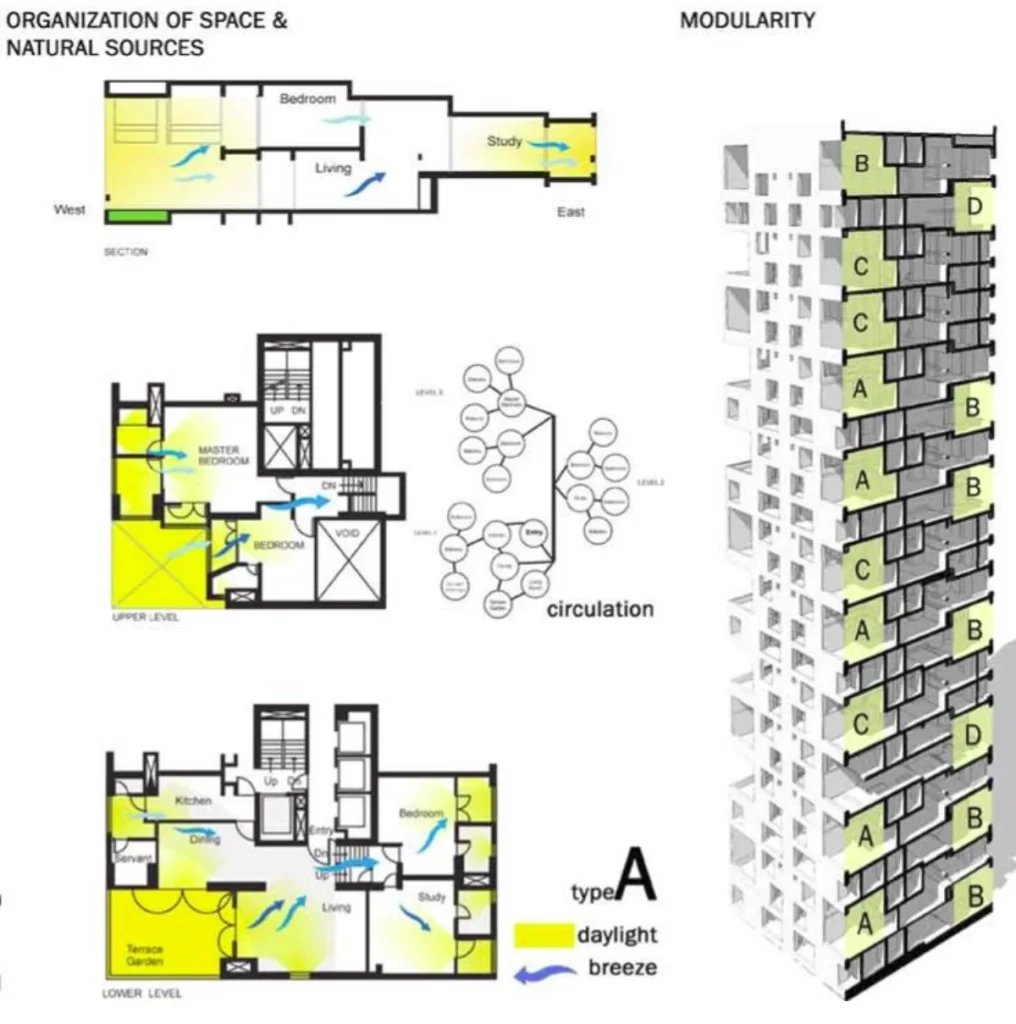
Charles Correa Foundation
Charles Correa launched the Charles Correa Foundation (CCF) in 2011. The CCF serves as a driving force behind community-based, planning, architectural, and urban design initiatives that enhance India’s human settlements. To affect positive change, the foundation instigates conversations among architects and designers. The goal of CCF is to find potential ideas and develop them into concrete, well-organized projects that can be presented to decision-makers and interested parties. The Charles Correa Foundation operates entirely on a nonprofit basis to represent and enhance Indian architecture while simultaneously conducting urban planning India.
Image Courtesy – Mint

